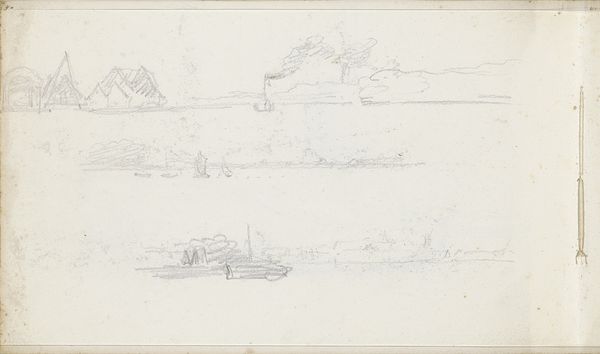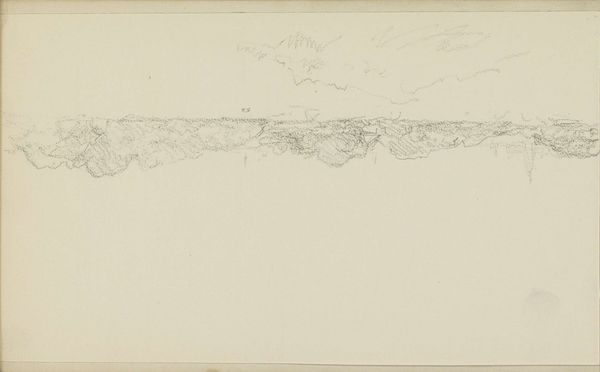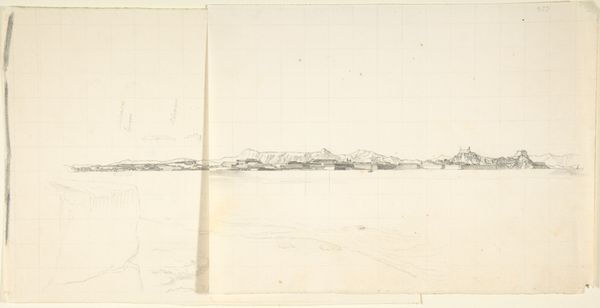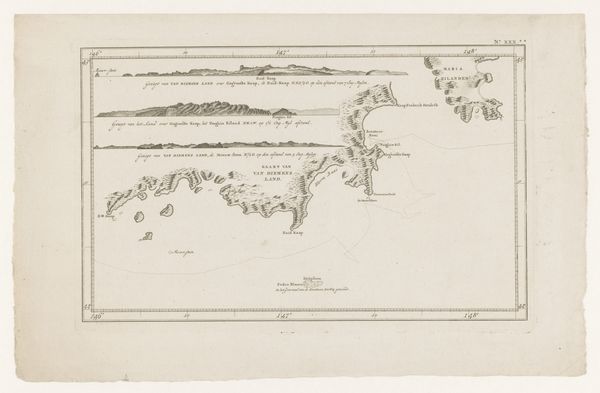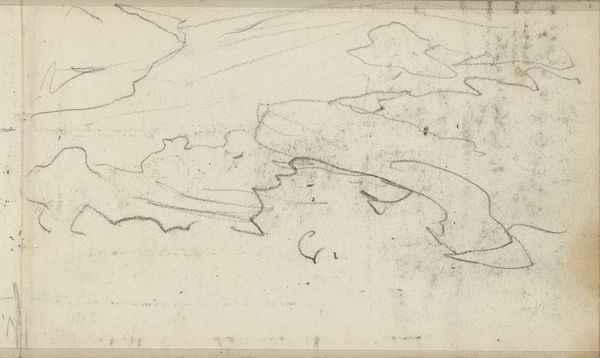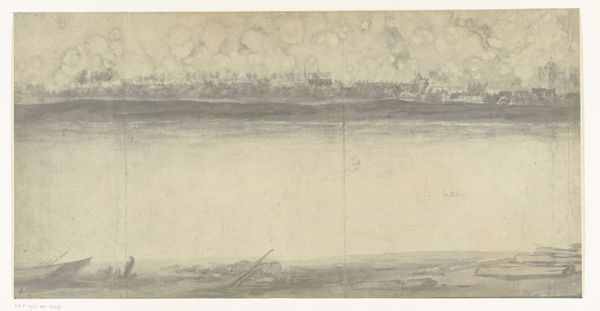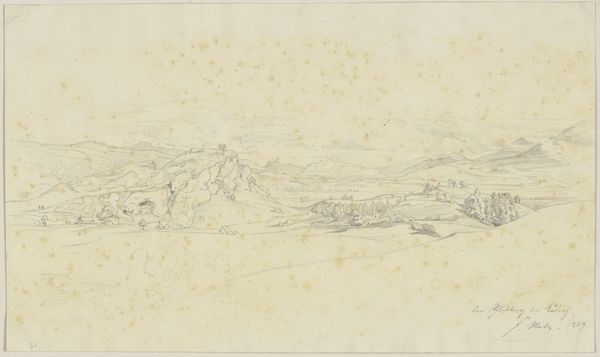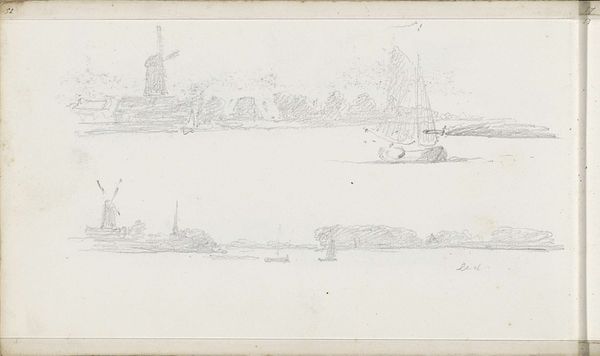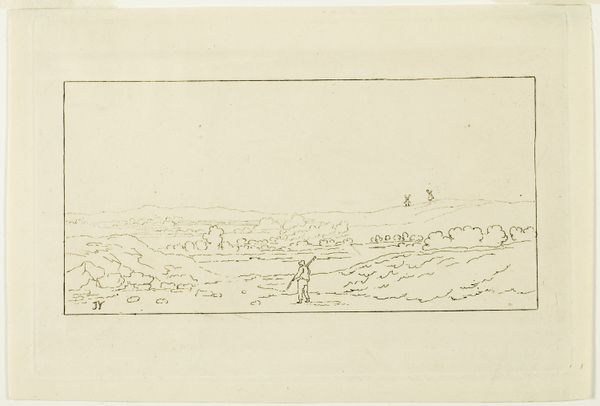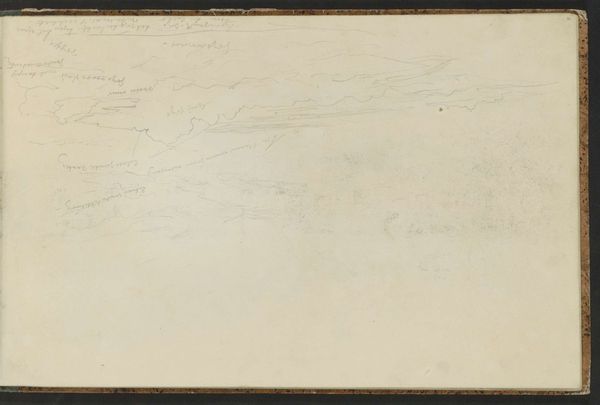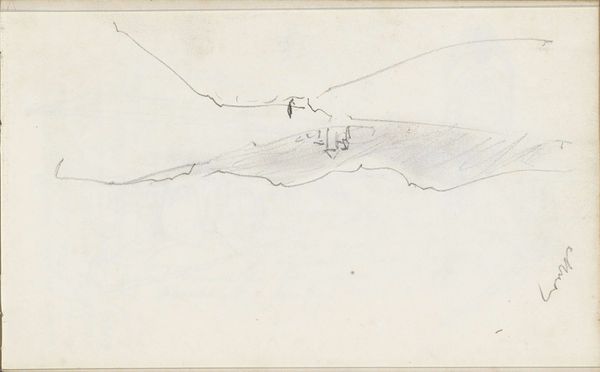
Isola Madre und Isola S. Giovane im Lago Maggiore c. 1795 - 1799
0:00
0:00
drawing, paper, pencil
#
drawing
#
landscape
#
etching
#
paper
#
romanticism
#
pencil
#
15_18th-century
Copyright: Public Domain
Curator: This is Georg Melchior Kraus's "Isola Madre und Isola S. Giovane im Lago Maggiore," a landscape drawing created around 1795 to 1799. Editor: There's a wonderful ethereality to it; so pale, almost ghostly. It seems preliminary, like a first thought captured in pencil. Curator: Indeed. Kraus was part of the Weimar Classicism circle, deeply influenced by the prevailing social ideals and the evolving concept of landscape as a source of national identity. Notice how the vista opens up, presenting an idealized, panoramic view of the lake and its islands. These landscapes reinforced notions of beauty and promoted cultural tourism among the elite. Editor: And the technique is remarkable. The drawing is on paper, rendered primarily in pencil with some etching; the meticulous details of the foliage and the suggestion of distant mountains achieved with such economy of line. The gridded under-drawing is partially visible. Do you think that has significance, or purely pragmatic? Curator: The grid speaks to a deliberate planning process, perhaps reflecting the influence of classical principles of order and structure in landscape design that were popular at the time. The artist uses it almost like stage directions, indicating Kraus may have originally conceived the sketch as part of the Italian journey educational tradition, intended to teach participants how to interpret, consume, and collect artwork upon their travels to countries abroad, teaching refinement. Editor: Interesting perspective. I am drawn more to the tonal variations that create a sense of depth, even without a full range of color. Note the balance; the way the clusters of trees on the left are balanced by the distant mountains, subtly drawing the eye across the water. It’s almost meditative. Curator: These depictions are vital components of the Romanticism style and their emphasis on capturing transient experiences and raw emotional reactions towards serene places; viewers see the world of Lago Maggiore, along with its sublimity and peace. Editor: Perhaps Kraus wanted the viewer to embrace these ideals, even at a time where great turmoil reigned the area. All elements seem to gently converge towards that objective. It has been insightful. Curator: Indeed, seeing Kraus' artwork through these aesthetic principles, rather than just history, illuminates previously unseen points.
Comments
No comments
Be the first to comment and join the conversation on the ultimate creative platform.

